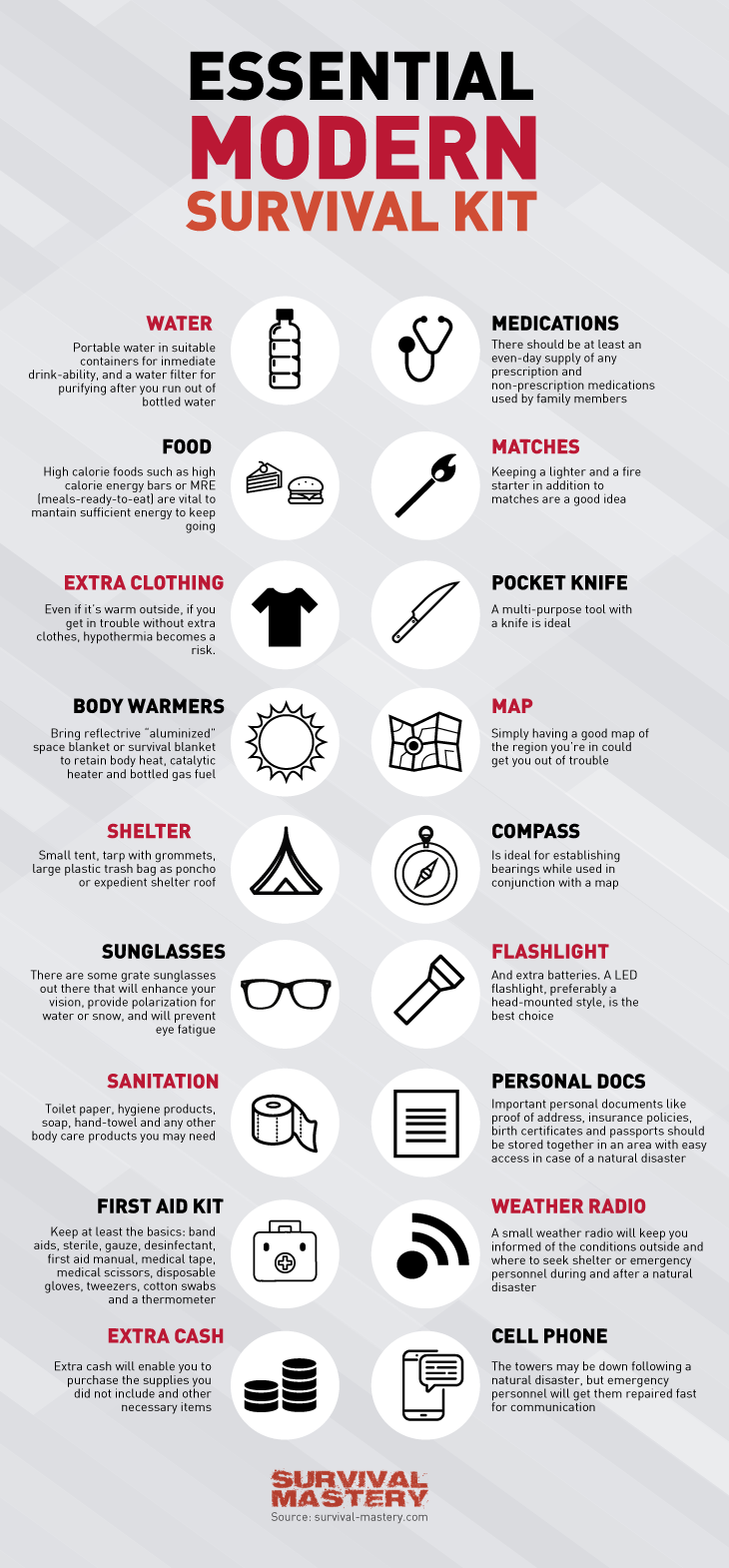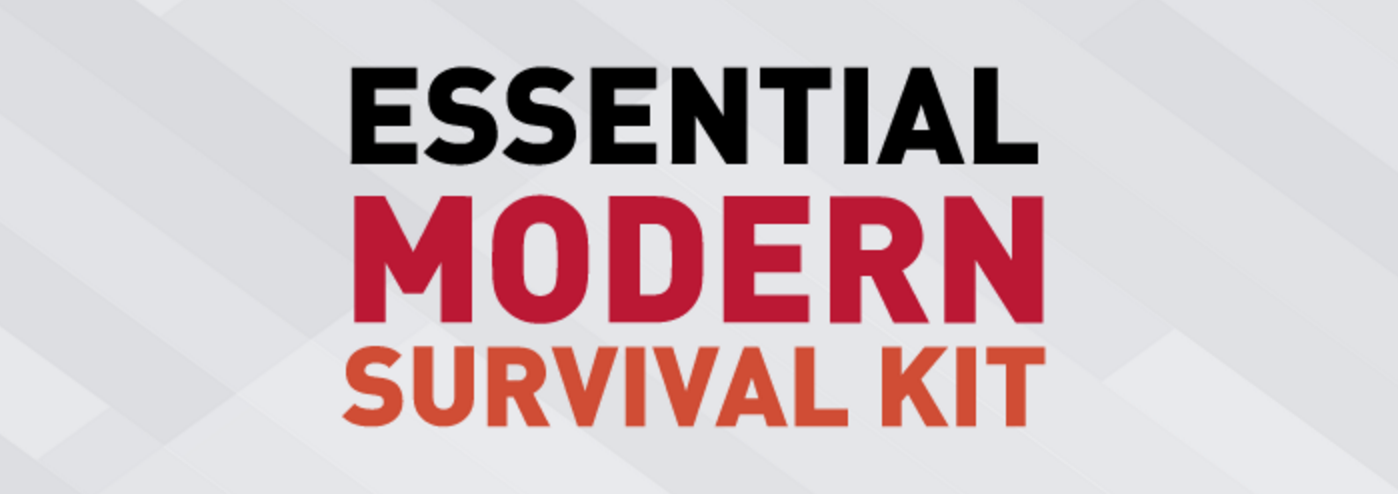I wanted to highlight these bug out bag packing techniques from gray wolf survival. They do a good job of coving things that would otherwise be looked over. Let us know what you think in the comments below.
1 Don’t pack more than what you’ll need. When you’ve made your list of what you need, go through it and start getting rid of things. A bob bag should hold essentials, not your whole life. You won’t be able to carry 80 pounds of gear very far, and even if you do, you won’t be very fast. Make your list, then prune it. Then prune it again. This is important. Whatever you’ve packed, you’ve probably packed too much. Try walking through your neighborhood for a few miles with it and see how it carries. After that, take it out somewhere that has hills. You’ll be surprised just how heavy a bug out bag is after trying to take it up and down a hiking trail. Now think if you were in a hurry? Just for reference, my bag is only 25 pounds plus what water I need to carry and maybe some GORP.
2 Leave some room. You’re going to run across things while you’re out prepping and even once SHTF and if you don’t have room for it, you’ll have to either pass it up or dump something important. Leave some room for those items. Survival also depends on capitalizing on opportunities. Your bug out backpack needs to fit things that you find along the way or have to replace if they break. You may need to be moving through an area and pick up tinder or kindling to take to another area because it’s not always easy to find in a survival situation. If you don’t have room in your pack, you’ll be carrying it in your hands. This isn’t like luggage where you can hand it off to someone; you’ll have to carry it or wear it unless you have some kind of container for it that you’re wearing on your back.
3 Rotate your stock. Rotate your survival and/or prepping food, vitamins, and medicine. This goes the same for what you keep at home too. Don’t pack a cellar full of food and lock it up. You should be going through it along with your fridge food. Keep track of what you have and when you need to replace it. You don’t want to wait until SHTF to find out your food’s gone rotten or your meds are expired.
4 Things cost more than they seem. An important tenet to camping and survivalism is that everything has an opportunity cost associated with it. You only have so much room in your bug out bag, can only carry so much weight, and have only so much money. Choosing one thing means you’ve lost the opportunity to choose something else. Choose wisely and learn to prioritize by making a list and a bug out plan. You can’t have it all; where would you put it?
5 You’re gonna survive with what you brung. A $4 flashlight you have in your pocket is worth more than the $600 Surefire you left at home. I have several flashlights of all different sizes, power and colors but the one I use far and beyond more than the others is the little Surefire E1L that I keep in my pocket. I’ve had it in Iraq, several countries in Africa, Thailand, and Afghanistan. It’s an awesome little light. Always bring a backup. the 7 watt, 300 lumin Cree light takes AA batteries and is freaking super bright and indestructible.
You should have some kind of shelter with you. A lot of people just bring a tarp and a hammock but ultralight tent technology has improved greatly and prices have come down. An ultralight backpacking tent may make more sense – and be a LOT more comfortable.
6 Two is one and one is none. When SHTF, Murphy is going to be along for the ride. Sure as shit, when you sorely need something, you’ll reach for it and it’ll be gone, broken or malfunctioning. Keep spares of all your most important things.
7 Overlap your capabilities. You need to have duplicates of what you put into your different bags from each category but they don’t have to be exact duplicates. You may only have time to grab one bag so make sure your bases are covered. You don’t want to be stuck because your firestarting kit is in another bug out bag and you don’t want to have only way to do things by packing the same thing in every bag. You also don’t want your backup to be another lighter if lighters aren’t working due to weather, etc.
Choosing things that can perform more than one function can also help make sure you have overlap in capabilities without having to add equipment.
You may have a couple of fish hooks in your EDC (everyday carry bag) along with some fishing line, and then some lures and more hooks and line in a larger bag, and then a fishing pole with everything in your largest bag. Each bag should be able to stand alone on some level. I have a collapsible Shakespeare fishing rod, for example, in my pack a lot of times. It’s not completely necessary because you can just use a stick but it is a lot easier.
8 Have more than one bug out bag. You should theoretically have several but that may not be feasible. Consider also not keeping everything at your house. You may not be able to get to it if SHTF. You may want to keep some items at a friend’s house or even stash them, hidden somewhere in the woods where you can get them later. For instance, I have a 13 pound go-bag that I carry everywhere and then have a main backpack that I carry if I’m going on a search and rescue or if SHTF. Either one will work if I had to survive and they augment each other if I’m lucky enough to have both in a survival situation.
9 Keep your bags ready to go. Don’t have them lying all over the floor after you finish counting things or get back from a camping trip. It’s better to grab what you have at short notice than not be able to grab much because you didn’t have time. You’re trying to plan for worst case here and worst case is that you only have a few minutes to go. Don’t spend it packing.
10 Your bug out bags should be packed based on bug out plan. It’s difficult to know what you’ll need to pack if you don’t know where you’ll be or what you’ll be doing. Plan first; then pack. Do some research into why you need things before you just take someone’s word that you do, especially if they’re trying to sell you something. You should have a bug out route already specified, and that route may include cache locations that can supplement your bug out bag.
11 Dual-usage items cost half the weight and space. There are many solutions to each category below. Some of those solutions will also serve to fulfill what you need in other categories. Try to do this as much as possible. Survival is about creativity. Be creative and you’ll survive.
12 Learning skills can mean less equipment you’ll have to carry. If you can make a field-expedient fishing pole, for example, you don’t need to pack a fishing pole. Learn how to do and make things in the wild. Skills can also be bartered.
13 Pack the heaviest things closest to your back. The farther something is away from the leverage point, the more it pulls. Imagine holding your bug out bag close to your chest. You could do that for quite a while. Now imagine holding it in your hands with your arms stretched way out. How long could you hold it then? It’s the same weight. It’s the same thing with a backpack. Put the heaviest things as close to you as possible so it doesn’t put undue stress on you. Put them as close to your spine as possible.
14 In addition to weight, pack by urgency and frequency of use. Put the stuff you need a lot at the top and the stuff you don’t need a lot at the bottom. If you have a bag that allows access by opening all the way, it’s not that big a deal, but it may help you find things quicker.



